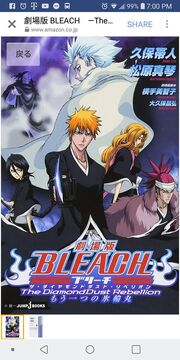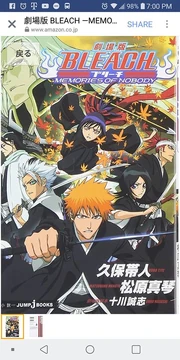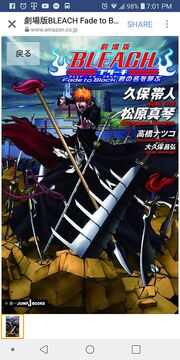vFirst, let me address the claim it is canon. Why exactly is it being considered? The post above rambles on and on but doesn't say much. There is exactly
one panel worth of dialogue that can be used to argue the movie's canonicity.
Ichigo says that he went to the Valley of Screams before.
That's it.
At first this would make one think that the whole movie is canon, but it honestly isn't. This isn't the first time concepts from Non-Canon anime and movies are taken into primary canon. Just look at the Naruto Shippuden Blood Prison which appeared in the Boruto manga. Neat, right? Doesn't mean Movie 2 is canon. Same with stuff like Ms.Pizza and Gregory appearing in Super not making all of Kai / Toei anime canon. If Gogeta appears in Super that also won't make Fusion Reborn Canon (People would argue that Fusion Reborn would have to be canon for Vegeta to know the fusion dance, but he could have learned it at any point in the years since the end of the Buu Saga. Similarly, Ichigo could have visited the Valley of Screams off-screen at any other point).
The Fairy Tail Dragon Cry movie is also not canon despite having some references in canon media.
Also,
Kubo used the movie as a reference image for one panel showing a window. That's it. That is definitely not enough for saying that the whole movie is canon.
Masami Kurumada outright participated in the writing of the Saint Seiya Eris OVA, and drew the designs for all the villains. That's far more participation than Kubo had with Memories of Nobody, but that doesn't make it canon.
Why? Because it simply doesn't fit the continuity. Which brings me to this:
When Rukia appeared in the Arrancar arc, Ichigo hadn't seen her since the Soul Society arc. Rukia showed off her Zanpakutō's powers in the movie, even though she first shows them off against Di Roy in the Arrancar arc. In the movie, Rukia is hanging out with Ichigo too, not even on a mission(she's not even tasked with Karakura Town anymore since Kurumadani took her place as noted in the Arrancar arc).
And there's also the fact that Ichigo was surprised her Shinigami powers came back in the Arrancar arc, even though in the movie, he wasn't.
Also two things about the interpretations of the movie's ending:
1. The explanation above seems to suggest that everyone lost their memories of the movie's events, but what was said is that they'd lose their memories of Senna, which can also mean they'd remember everything about the movie BUT her.
The ending with Ichigo is also ambiguous, he just sees her passing and smiles. No confirmation is given about him remembering her or not. We are meant to draw our own conclusions as an audience.
So at this time, we don't know who if anyone actually remembers her.
2. The explanation is misquoting Urahara's explanation. What he says in the film is that the Valleys naturally occur in the Dangai, but essentially this one's getting too big, so it's encroaching on the human & spirit worlds. The explanation in the manga is different.
It can be reconciled by assuming that the Valley in the movie punched into the Dangai from the Garganta, which leads me to the point that you have to assume things would probably be slightly different if Kubo were writing. Not much, just a few small things here & there, like the fact that the Urahara kids shouldn't know Renji yet.
Finally, when exactly would the movie have taken place? It simply doesn't fit the manga timeline: After Ichigo fought Ulquirroa he fought Yami (briefly), then went straight to fight Aizen. Then he lost his powers. There's no possible timeskip in the manga to fit the movie in, specially with him being surprised of seeing Rukia again at all in the Arrancar arc.
In conclusion, Memories of Nobody being canon is iffy and controversial at best, and downright incorrect at worse.
There's also the fact that Memories of Nobody is a movie of the Bleach Anime, not the manga. And there are
several differences in Bleach between the original canon manga and the animated adaptation, both minor and significant. It is not a movie that was advertised or meant to be a literal addition or continuation to the manga storyline, like Dragon Ball: Battle of Gods, or Naruto The Last.





